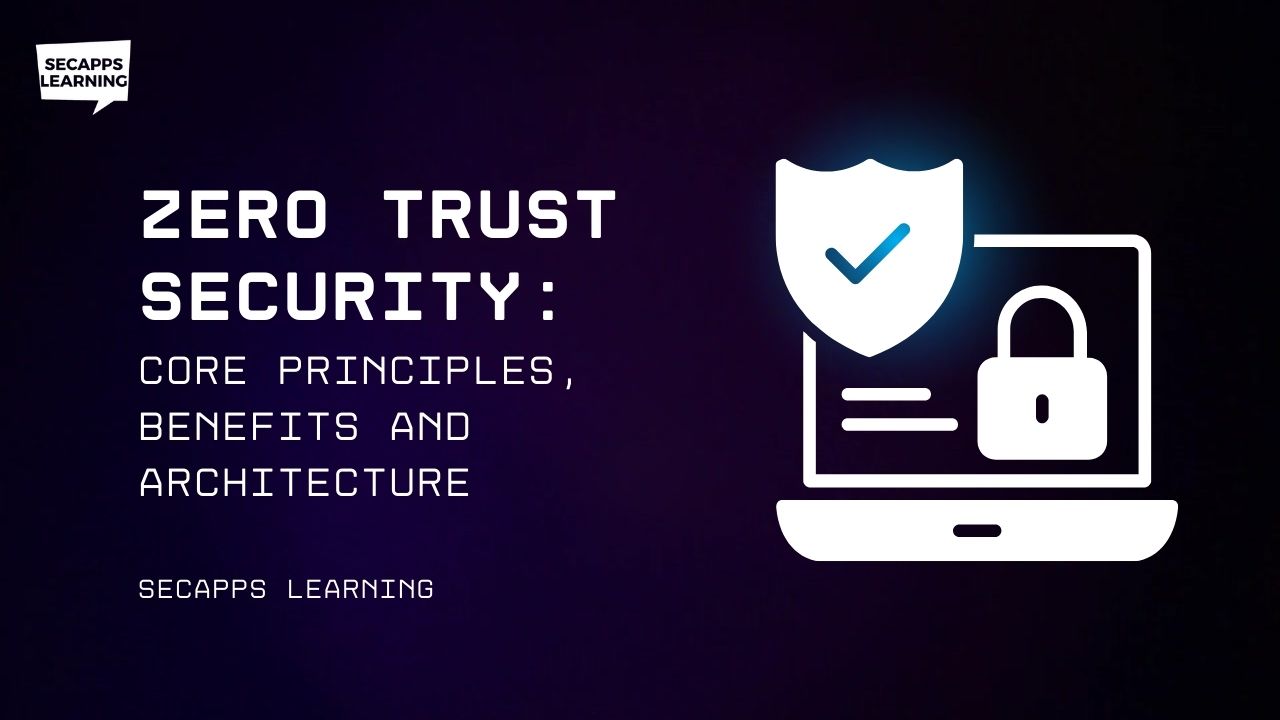
In today's digital world, where data breaches and cyberattacks are commonplace, organizations need robust security measures. Traditional security models, built on the idea of a trusted internal network, are increasingly inadequate. This blog introduces Zero Trust Security, a powerful framework that throws out the old rulebook and prioritizes continuous verification.
Zero Trust Security is a cybersecurity model that takes into account that threats can be present both inside and outside the network. Traditionally, network security strategies have operated with the belief that everything that operates within the network is trustworthy while anything outside may or may not be. The emphasis was, therefore, on external threats.
Zero Trust Security trashes this belief. It stresses continuous verification of every user, device, and application trying to access resources on a network, regardless of whether inside or outside the network perimeter.
1. Verify: Authenticate and authorise users and devices attempting to connect to the network, whether external or internal.
2. Limit Access: Permit only the minimum level of access required for users and devices to perform their tasks.
3. Least Privilege: Provide users and devices access only to the specific resources they need to complete their tasks, rather than permitting blanket access to all resources.
4. Micro-Segmentation: Divide the network into smaller segments with access controls and security measures applied to each individual segment.
5. Inspect and Log Traffic: Continuous process of investigation. Keep monitoring network traffic continuously, keep looking for signs of suspicious activity, and log relevant information for auditing and investigation purposes.
Next up, we look at how Zero Trust Security and traditional security models compare with each other:
To sum up, while traditional security models rely on perimeter-based defences, and trust assumptions, Zero Trust Security employs a more dynamic and granular approach to access control. It continuously verifies trust and applies strict access controls throughout the network.
Fortress Your Security: Master Privileged Access with Best CyberArk Training
Zero Trust Security offers several benefits that enhance overall cybersecurity and provide better protection to organisations from modern cyber threats. Let’s have a look below:
Zero Trust Security is based on the assumption that no entity, whether inside or outside the network, is to be inherently trusted. In this way, it minimises the risk of unauthorised access and reduces the attack surface.
Zero Trust Security enables organisations to implement fine-grained access controls based on factors such as user identity, device posture, location, and behaviour.
Zero Trust architectures stress continuous monitoring and analysis of network traffic, user behaviour, and access attempts.
In today's dynamic and diverse IT environments, traditional perimeter-based security models may not be sufficient. Zero Trust Security is created to adapt to dynamic environments. It allows organisations to enforce security policies whatever the location of users and devices.
Insider threats, whether malicious or unintentional, can pose a significant risk to organisations. Zero Trust Security helps tackle insider threat risk by continuously verifying user identity and behaviour. It reduces the likelihood of unauthorised access or data exfiltration.
Many compliance frameworks and regulations require organisations to implement strong access controls and security measures. Zero Trust Security is created to align well with these requirements. In a compliance and regulatory function, it enforces strict access controls and continuously monitors for violations.
By adopting a "never trust, always verify" approach, organisations can better protect their sensitive data and critical assets. The threats may be in the form of sophisticated cyberattacks including insider threats, credential theft, and lateral movement by attackers.
Also read: How AI is Likely to Impact Cybersecurity in 2024
This offers several significant advantages to enhance the cybersecurity posture as well as adapt to evolving threats. Let’s consider some key benefits, many of which have been discussed in this blog earlier:
Implementing Zero Trust Security in cloud environments is crucial for maintaining a robust cybersecurity posture, especially as more and more organisations are adopting cloud-based services and infrastructures. Let’s consider these key points and best practices for implementing Zero Trust Security in cloud environments:
To conclude, as cyber threats keep getting more sophisticated by the day, the future of Zero Trust Security seems set to meet the challenges posed by advancing IT environments. It seems obvious that this will be driven by the need for stronger resilient, adaptive, and context-aware security solutions in a complex and dynamic threat landscape. As businesses of all sizes, including small and medium businesses continue to prioritise data protection, risk management, and regulatory compliance, Zero Trust Security will remain a critical framework for enhancing cybersecurity posture and mitigating evolving cyber threats.
Your email address will not be published. Required fields are marked*
Copyright 2022 SecApps Learning. All Right Reserved
Comments ()